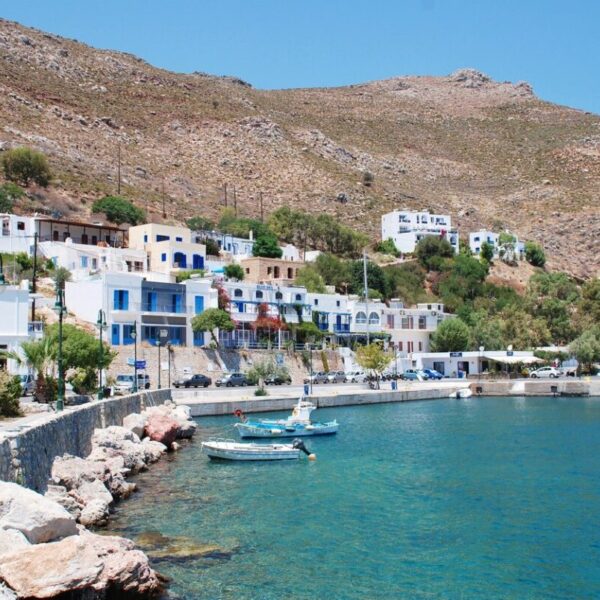Fossil fuels (oil, coal...) represent over 75% of global greenhouse gas emissions and nearly 90% of all carbon dioxide emissions. It is one of the most significant factors in global warming. One solution to reduce their usage and better preserve the environment would be autonomous communities that harness clean energy. This is what a small Greek island of 899 inhabitants in the Aegean Sea has managed to achieve. Since 2018, Tilos has been energetically self-sufficient and is even able to partially power neighboring islands.
On the island, a hybrid electricity production system has been installed thanks to the funding from the European Union under the Horizon 2020 program. The Tilos Project is the first hybrid renewable energy system in Europe. It operates through rechargeable batteries powered by an 800-kilowatt wind turbine and a 400-kilowatt photovoltaic solar park. This innovative system enhances the storage of excess energy produced. Thus, it allows the grid to remain powered both during sunny days and on those that are too windy for the wind turbine to operate.

Almost Energy Independence
Most of the time the island is energetically self-sufficient. The energy produced in winter is even much higher than that consumed. During this season, Tilos exports its electricity via an underwater cable to the neighboring islands of Kos and Nisyros. During summer, this same cable imports the energy needed to cope with peak demands. Due to tourism and the subsequent increase in needs, this rate then drops to 75%.
The world's first waste-free island
The innovations do not stop there. Tilos is the world's first zero-waste island, thanks to the Just Go Zero Tilos program, initiated by the Greek group Polygreeen and started in 2023. Through advanced technological equipment and new infrastructures, all solid urban waste produced on the island is collected and valorized according to the principles of the circular economy. Currently, Tilos recycles 97.3% of its waste. The rest is compressed to produce pellets, an economical and environmentally friendly fuel, which is then sold. Waste disposal sites have been replaced by a circular innovation center.

All the residents of the island have received special bags to store waste. In a blue fabric bag, they must put everything that can be recycled, plastic, glass, electronic devices, clothes, or even batteries. Everything must be clean and dry in order to be reused later. Two other biodegradable bags are also provided. One for food scraps and the other for waste such as toilet paper, disinfectant wipes, and surgical masks. They are then placed in a large rigid bag and collected.
Compost from waste is redistributed
Every day, employees equipped with small electric cars collect waste from businesses and, four times a week, from individuals. They head to the Circular Economy Center, where manual sorting takes place, followed by composting. The final steps involve distributing the produced compost to residents who have land and practice agriculture. The remaining recyclable materials are compressed, transformed, and transported to Athens every 15 days, then sold to different companies. There are no more trash cans on the island, and all residents, of all ages, have been introduced to these practices. "We have been fully informed by experts on what we need to do, and it has now become a daily habit for us. Even our children organize hikes on their own to pick up any potential waste that may be on the road," says Jenny Giannopoulou, a resident of the island.
All of this would not have been possible without the commitment of the mayor of Tilos, Maria Kammas-Aliiferi. Her perseverance and strong leadership have allowed the adoption of "green" practices and an innovative sustainable vision over the past twelve years. "A healthy natural environment is a fundamental human right," she says. She has managed to ensure this for her fellow citizens. Tilos has been awarded several times internationally for its innovative energy solutions and its contribution to a sustainable and climate-friendly Europe. It is part of the Natura 2000 network and the Wildlife Reserve.

